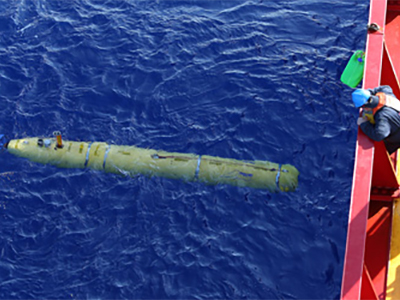Remote Undersea Surveillance

Securing Australia's maritime interests through the provision of persistent and responsive undersea domain awareness.
‘Protecting Australia’s large exclusive economic zone requires understanding of the maritime environment under our control, sustained presence, and adapting to new technological developments that could increasingly complicate our ability to keep Australian interests safe in the Maritime domain.’
— Force Structure Plan, 2020
Context
Australia's vast maritime expanse is critical for trade, natural resources and a wide range of activities supported by Navy. Situational awareness of the undersea domain is essential to protecting these interests. The underwater environment is complex and is becoming increasingly congested with a greater density and variety of undersea vessels (both civilian and military). Potential threats such as submarines, mines and autonomous underwater vehicles are developing rapidly, incorporating new technologies to aid teaming and collaboration, avoid detection and enable stand-off capabilities that allow them to act at much longer ranges.
The ADF needs advanced undersea surveillance capabilities to deal with the complexities of a congested and highly contested underwater environment, particularly to support future theatre anti-submarine warfare. Fully integrated sensor systems and networks will provide persistent coverage over wide expanses of ocean over long periods of time. They will have the capacity to be rapidly and flexibly deployed to areas of interest, have sufficient endurance, and operate effectively over a range of conditions in deep water and shallow littoral environments. They will complement, work cooperatively and integrate with other ADF undersea warfare capabilities and support interoperability with coalition partners.
Opportunities
- Integrated undersea surveillance systems and networks for wide-area coverage and persistence over long periods of time.
- Advanced sensor technologies.
- Trusted unsupervised detection, classification, localisation and tracking algorithms.
- Application of autonomous systems to extend the reach of submarines, surface task groups and maritime air operations.
- Network and sensor resilience.

